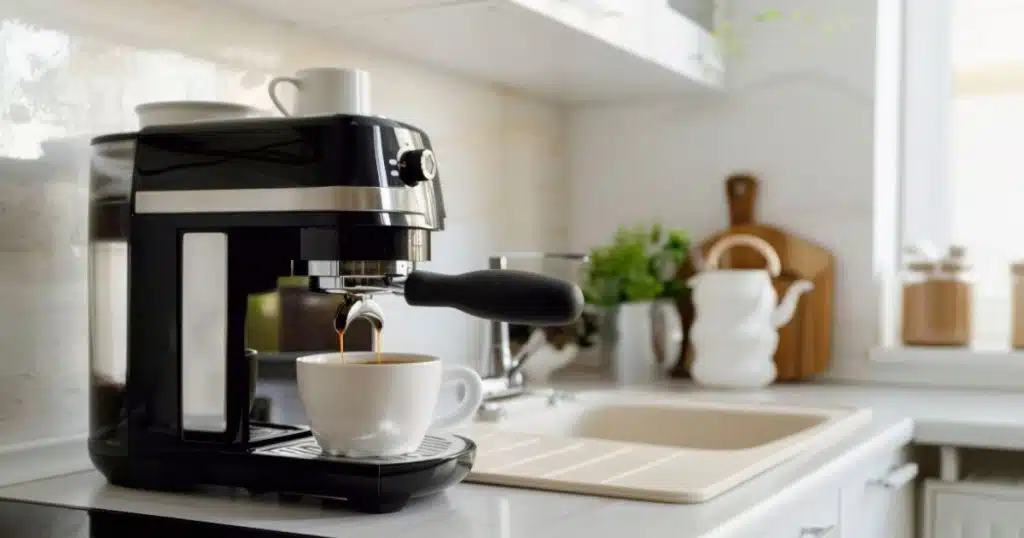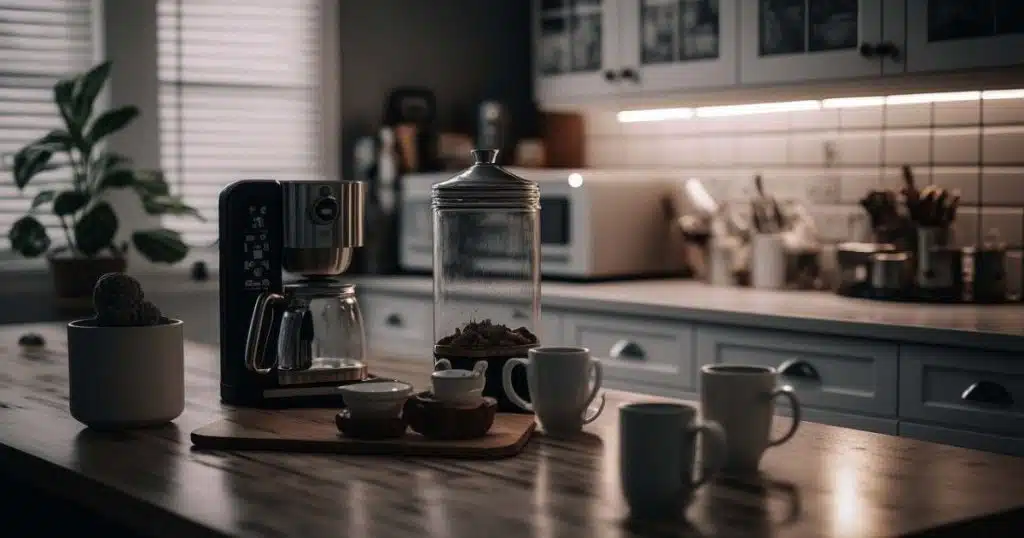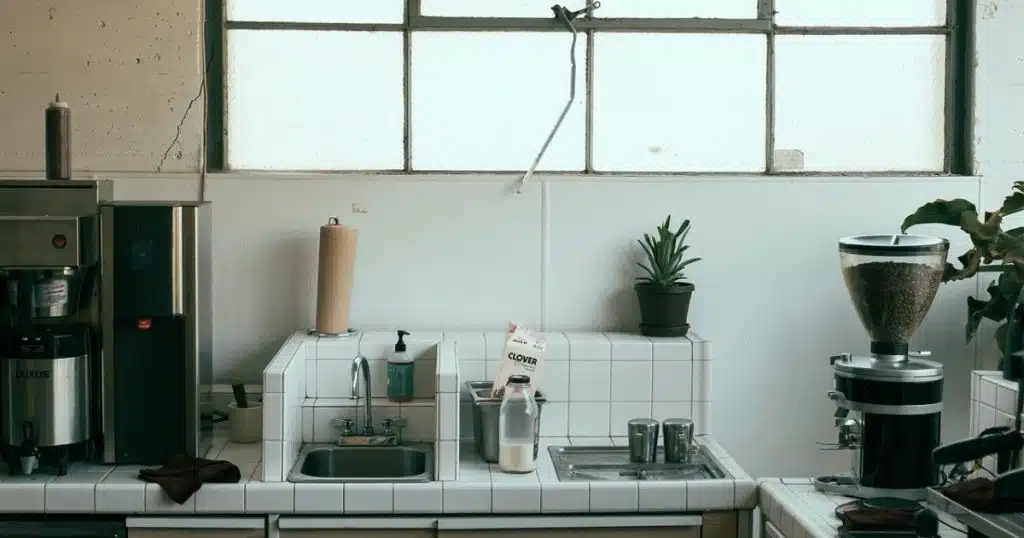As an Amazon Associate I earn from qualifying purchases.
Coffee makers are an essential part of many kitchens, transforming mornings with the rich aroma of freshly brewed coffee. While these machines are trusted daily by coffee lovers everywhere, one question frequently arises: How many years should a coffee maker last? Here, we’ll break down the typical lifespan of various coffee maker types, factors that influence longevity, and valuable tips for getting the most out of your machine.

How Many Years Should a Coffee Maker Last? Average Lifespan
The average lifespan of a coffee maker generally spans 5 to 10 years, influenced by factors like quality, frequency of use, and maintenance practices. Higher-end models, especially those made with durable materials like stainless steel, often last longer than basic models, especially if they are regularly maintained. For coffee makers used daily, parts like the heating element, pump, and seals may wear out more quickly, while machines used less frequently might last closer to a decade.
Maintenance also plays a key role; regular cleaning and descaling every 1-3 months can prevent mineral buildup, extending the coffee maker’s functionality. Over time, mineral deposits from water can clog internal components, impacting performance and potentially shortening the machine’s lifespan. Ultimately, choosing a well-built machine and caring for it properly can maximize its lifespan, making it a reliable part of your kitchen for years.
Different types of coffee makers Lifespan
Different types of coffee makers have unique lifespans, largely due to design, usage, and maintenance needs. Here’s a breakdown:
Drip Coffee Makers: Typically last about 5 to 7 years. These machines have simple components but may experience issues with the heating element or water pump over time, especially if not regularly descaled.
Single-Serve Machines (e.g., Keurig): Generally last around 3 to 5 years. These machines have complex, small parts that wear out more quickly with frequent use, particularly if users don’t perform regular cleaning.
Espresso Machines: High-end espresso machines can last 7 to 10 years or more. Quality machines with metal components and removable parts for maintenance are especially durable, while basic models may last closer to 5 years.
French Press and Pour-Over: These manual coffee makers are non-electric and have few parts, so they can last indefinitely with minimal care.
Regular maintenance, cleaning, and part replacement (if available) are key to maximizing the lifespan of each type.
Factors Affecting the Lifespan of a Coffee Maker

The lifespan of a coffee maker is shaped by several factors, which include:
Quality of Materials and Components: Coffee makers built with high-quality materials, like stainless steel and durable heating elements, tend to last longer than those made with cheaper plastic parts. Brands focused on quality often produce machines that withstand wear and tear more effectively.
Frequency of Use: Coffee makers used multiple times per day experience more wear on parts like pumps and heating elements. Machines used only occasionally will generally last longer, as frequent use accelerates the breakdown of essential components.
Maintenance Practices: Routine cleaning and descaling are essential to prevent mineral buildup, which can clog and damage internal parts. Descaling every 1-3 months helps maintain optimal function and reduces strain on the machine, thus extending its life.
Type of Coffee Maker: Lifespan varies by type. Manual options like French presses can last indefinitely, while electric drip and single-serve machines may last 5-7 years. Espresso machines, especially high-end models, can last a decade or longer with proper care.
Availability of Replacement Parts: Machines with accessible, replaceable parts (such as pumps and gaskets) offer more opportunities for repair, extending their usable life compared to models without replaceable components.
Common Failure Points in Coffee Makers
Coffee makers, like any appliance, have common points of failure that can affect their performance and lifespan. Some of the most common issues include:
Heating Element: The heating element, responsible for warming the water to brew coffee, is one of the most common points of failure. Over time, mineral buildup or electrical issues can reduce its effectiveness, causing the machine to brew lukewarm coffee or stop heating altogether.
Water Pump: A pump is used in many coffee makers to push water through the coffee grounds. Pumps can wear out or clog, especially if the machine is used daily or if hard water is used. A failing pump often leads to slow brewing times or, in some cases, prevents brewing entirely.
Seals and Gaskets:Rubber seals and gaskets help prevent water leaks within the machine. Over time, these components can dry out, crack, or lose flexibility, leading to leaks or pressure loss, especially in espresso machines.
Control Board and Sensors: Modern coffee makers with electronic controls may experience issues with the control board or sensors. Power surges, moisture, or age can cause electronic components to malfunction, preventing the coffee maker from starting or operating correctly.
Clogs and Mineral Buildup: Mineral deposits from hard water can clog internal tubing and nozzles, obstructing water flow. Regular descaling can prevent clogs, but neglecting maintenance can lead to serious clogs that damage the machine’s internals.
Carafe or Pot Breakage: In drip machines, the glass carafe or pot can easily break, especially if dropped or exposed to temperature extremes.
Addressing these common failure points with regular maintenance, using filtered water, and handling with care can help prolong the life of a coffee maker.
Design and Material Quality: Key to Longevity in Coffee Makers

Design and material quality play crucial roles in the longevity of coffee makers. Machines made with high-quality materials, like stainless steel, brass, and durable plastic, generally last longer than those built with cheaper materials.
High-end coffee makers often feature robust heating elements and sturdy pumps that can handle daily use, while budget models may use components prone to wear. Additionally, coffee makers designed for easy disassembly allow for straightforward cleaning and repairs, extending their usable life.
Design features like replaceable seals and accessible internal parts make maintenance simpler, helping prevent common issues like leaks or clogs. Overall, a well-designed coffee maker with quality materials offers better durability, making it a worthwhile investment for long-term use.
Signs It’s Time to Replace Your Coffee Maker
Key signs that it may be time to replace your coffee maker include:
Reduced Coffee Quality: If your coffee tastes weak, bitter, or inconsistent despite using the same beans and grind, it could indicate that the heating element or other internal parts are failing.
Slower Brewing Time: A significant increase in brewing time often signals internal clogs or a failing pump, especially if descaling doesn’t resolve the issue.
Lukewarm Coffee: Coffee makers that no longer reach optimal brewing temperature (195°F to 205°F) produce subpar coffee. This issue usually points to a failing heating element.
Frequent Breakdowns: If you’re frequently dealing with leaks, clogs, or other malfunctions, it may be more economical to replace the coffee maker than to continue repairs.
Unusual Noises or Smells: Loud grinding or hissing sounds, as well as burnt smells, can signal electrical issues or internal damage, indicating it’s time for a new machine.
Recognizing these signs can help you determine when it’s time to upgrade for better performance and reliability.

Maintenance Tips for Extending a Coffee Maker’s Lifespan
- Clean Daily: Rinse the carafe and filter basket after each use.
- Deep Clean Weekly: Wash all removable parts with warm, soapy water.
- Descale Regularly: Run a descaling cycle every 1-3 months with vinegar or a descaling solution.
- Use Filtered Water: Prevents mineral buildup and improves flavor.
- Replace Worn Parts: Change water filters and rubber gaskets as needed.
- Store Dry: Empty and dry the machine fully before long-term storage.
Is an Extended Warranty Worth It?
Extended warranties on coffee makers can be worth considering, particularly if you’re investing in a higher-end model. Since the cost of repair for electronic components can be high, a warranty may offer peace of mind and cover repairs if your machine has a mechanical issue within the warranty period.
Summary
A well-maintained coffee maker can last beyond its average lifespan of 5 to 10 years, providing fresh coffee every morning. By choosing a machine suited to your needs, committing to regular cleaning and descaling, and staying mindful of potential points of failure, you can help your coffee maker serve you for years to come
Amazon and the Amazon logo are trademarks of Amazon.com, Inc, or its affiliates.
Leave a Reply